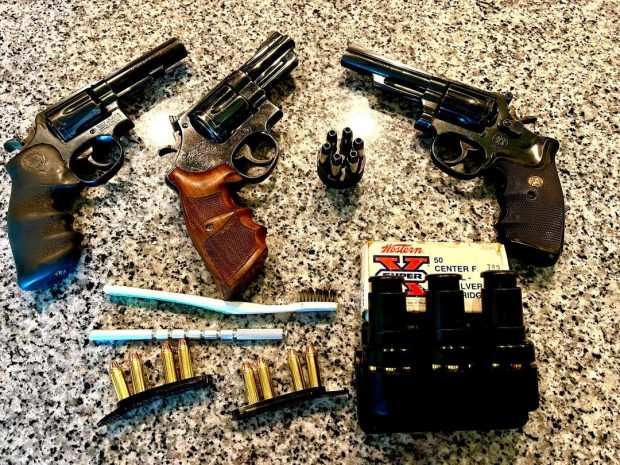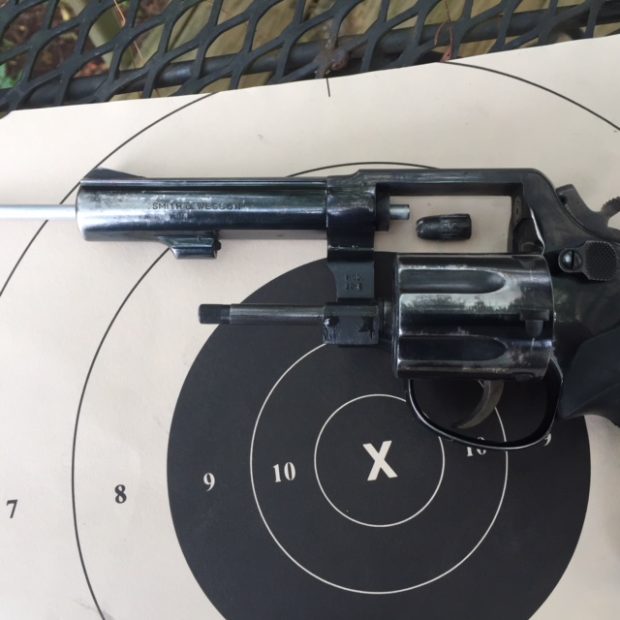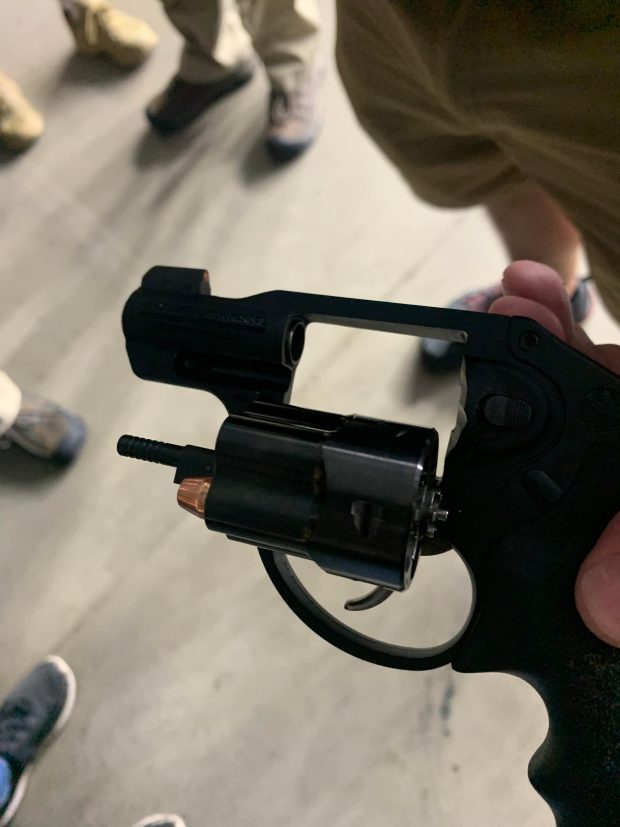It’s a myth that your revolver will never malfunction.
Revolvers commonly have malfunctions, but the malfunctions are quite different from those seen in semi-automatic pistols.
As my friend Chuck Haggard says: “Revolvers will tolerate neglect. They won’t tolerate abuse.”
If I had to take a gun to a 1000-round a day shooting school, a revolver wouldn’t be my first choice. Shooting a revolver that many rounds without cleaning, oiling, or tightening screws is the “abuse” Chuck is describing.
In most cases, it’s a recipe for malfunctions. But that same revolver can be loaded and placed in a dresser drawer for 50 years and still be fully functional should you need to pick it up and shoot it.
I taught a revolver class in Ohio a few weeks ago. Despite what the internet might tell you, I witnessed quite a few revolver malfunctions. One of the most common problems I see on the line is when the revolver shooter tries to pull the trigger and the cylinder won’t move. There are three very common reasons this happens, as well as one that is somewhat unusual. Let’s talk about these four issues and how to prevent them.
1) Powder fouling underneath the extractor star. This is exceptionally common and often seen after firing even as few as 100 shots with a revolver. Unburnt gunpowder collects underneath the extractor star and pushes the extractor up against the frame, binding the cylinder. There is a reason that revolver firearms instructors always have a toothbrush in their range bags or back pockets.
If you notice your cylinder binding, push the ejector rod to lift the extractor star away from the cylinder. Use a soft brush underneath the star and on the face of the cylinder to brush away any unburnt powder. If you are shooting a lot of rounds through your revolver in a single session, I would preemptively brush this area about every 100 rounds to prevent the malfunction from occurring.

There is a reason you see a toothbrush with my revolver gear.
2) Squib load. For some reason, I see more squib loads in .38 special revolvers than any other weapon type. A squib is a round that lacks power generally due to a powder charge being too small or not thoroughly igniting. The incomplete combustion propels the bullet forward, but without enough velocity to exit the barrel.
Often the bullet will be stuck between the cylinder and the forcing cone, thereby binding the revolver cylinder. You need a rod (commercially available as the De-Jammer) to drive the bullet back into the cylinder.
If you want more information about squibs, read Revolver Squib Loads.

Using the De-Jammer to drive a squib bullet out of the barrel
3) Loose Ejector Rod. After a lot of firing, the cylinder’s ejector rod will often loosen a bit. When it starts unscrewing, it often causes the cylinder to bind. Before each shooting session and after every 100 rounds or so, you should check to see that your ejector rod is fully screwed in and tight.
Some folks will use a thread locker on the threads to keep it from unscrewing, but I prefer not to do that. I think it’s useful to completely remove the ejector rod from the cylinder and clean it every year or so. Sometimes it will get rusty inside the cylinder. It’s difficult to remove the rod and clean it if you use thread locker to keep it from unscrewing.
4) Bullet Jump. This is when the recoil of the firing revolver causes the unfired bullet(s) in the cylinder to “jump” forward out of the crimp. Often the bullets will move forward enough to block the cylinder from turning. See the photo below for an example from my last class.

That might stop your cylinder from turning.
This round was a .38 hand load fired out of a Ruger LCR. The issue is relatively rare in .38 revolvers, but I see it very commonly with 9mm revolvers where the cartridges have a less substantial crimp. It usually happens when the shooter fires hot loads out of a very light weight revolver. The recoil causes the last round in the cylinder to walk forward out of the cartridge crimp, thereby locking up the cylinder.
These are the four most common reasons your cylinder won’t turn. If you shoot revolvers at all, you should recognize these issues and know how to remedy them.

